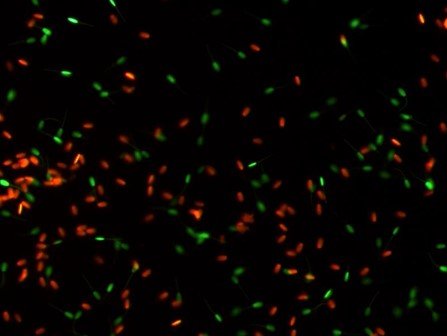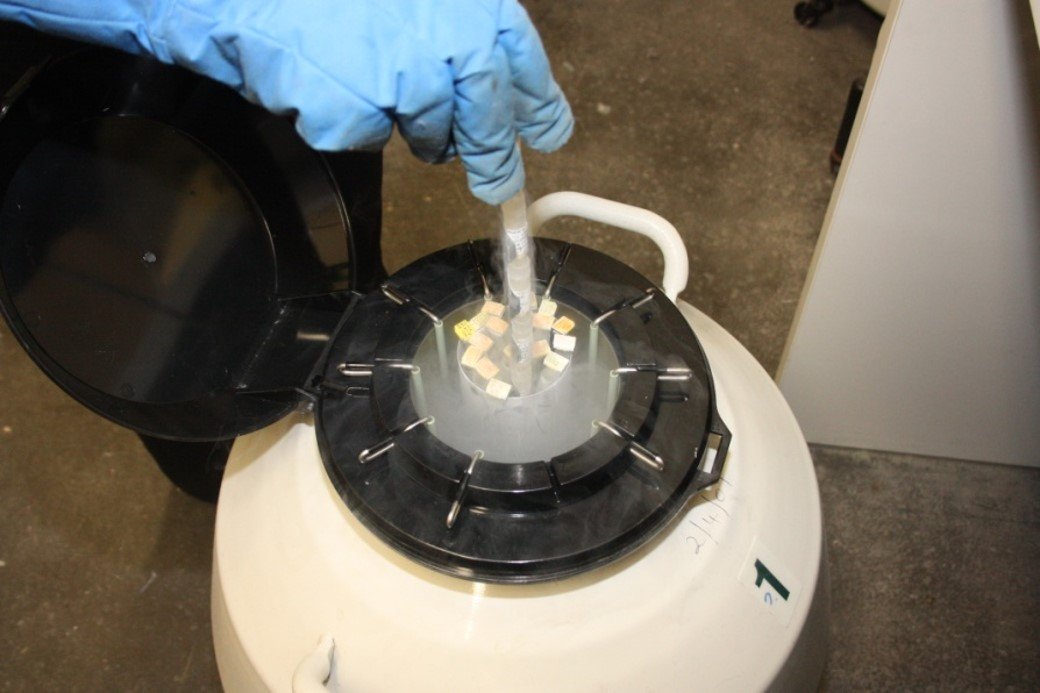
Semen Processing
There are 3 common forms in which we use and process semen: fresh, chilled and frozen. When semen is processed, each ‘step’ of processing (e.g., centrifugation) is believed to reduce the fertility of the sperm by approximately 10%. For this reason, we try and minimise the number of processing steps.
Fresh semen
Fresh semen is collected from the male manually in dogs and by electroejaculation in tomcats. It is important in dogs that the ejaculate is separated into its three fractions during collection. Fresh semen is then analysed for quality and inseminated immediately into the female.
Chilled semen
Chilled semen is only done in dogs currently. With this method semen is fractionated as it is collected. The semen rich fraction is mixed with a special extender which protects the sperm and allows the metabolism of the sperm to be safely slowed as the sample temperature is dropped to 4°C. Chilled semen is fertile for 24-48 hours, after which there is damage to the DNA which reduces the chances of the sperm working (even if they are swimming!). Chilled semen can be easily transported interstate in special chill boxes that keep the sample at 4°C for up to 48 hours. The fertility of chilled semen is believed to be the same as with fresh semen when used within 48 hours of collection.
Frozen semen
Frozen semen is best reserved for international transport or for preservation of genetics to use after the male is no longer fertile. Frozen semen is less successful in terms of pregnancy compared to fresh and chilled semen. When semen is frozen the sperm is analysed, mixed with special extenders to protect the sperm from ice crystal formation during later thawing, placed into straws and then frozen in, and later stored in, liquid nitrogen at -196°C. Semen can also be frozen in pellets; however, straws are preferred due to ease of handling and confidence in what semen is in the straws. The number of straws used per insemination is based on a calculation of the number total sperm in the sample, the percentage of normal sperm, the percentage of sperm that wake up on thawing and the number of straws frozen. It is recommended to not use semen with a post thaw motility of less than 40%.
Ice crystal formation in the thawed semen is prevented by the addition of glycerol to the media, however after thawing the glycerol must be diluted with a special thaw media to avoid damage to the thawed sperm.
For maximal success it is recommended to use a minimum of 150 million live normal sperm post thaw. Unfortunately, no one has ever looked at how many sperm are need for different sized animals, so we use the same for small or large dogs. With cats we just inseminate whatever we get; there is still not enough work on numbers in cats yet.



